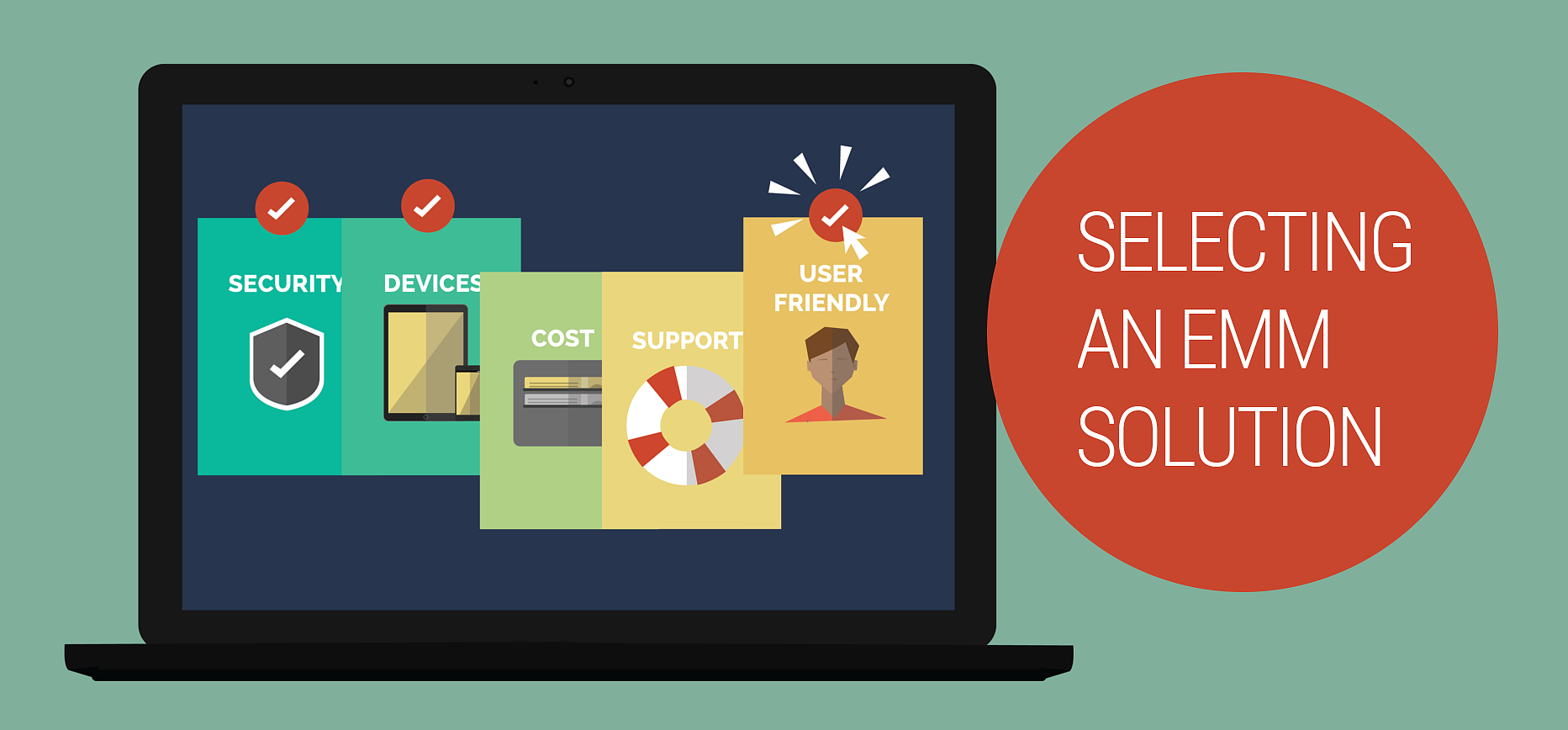5 things businesses must consider before selecting an EMM solution provider
May 26, 2016 | 42Gears Team
Businesses today cannot think of staying competitive without the use of mobile technology. The influence of mobile technology is such that all major aspects of business and operations are now heavily dependent on it. According to a study conducted by Forrester, 71% of businesses have given high priority to mobile technology and 45% of the employees are available “anytime and anywhere”. With such vast number of mobile devices, organizations struggle with the problem of managing them, providing support to the workforce and ensuring security of company information.
There are Enterprise Mobility Management or EMM solutions that attend to these problems. However, choosing the right solution is the next big hurdle for organizations. A wrong choice can drain precious resources of organizations and make the EMM solution a burden. For SMBs the impact of making a wrong choice is huge.
Choosing a popular solution might not be a good idea. To cover all industry scenarios, EMM solution providers tend to add multiple features to the products, making their performance sluggish. The all-encompassing EMM solution come with features that SMBs may never use. For example, a small business may not require a solution that provides complete separation of corporate and personal data on devices that comes bundled with the device management solution.
Below are guidelines to select the right EMM solution, especially for SMBs where resources are scarce and need to be put to efficient use:
Understanding organizational requirements
The most important aspect that businesses need to consider before selecting an EMM solution is to understand their organizational requirements. Instead of looking for fancy features, organizations must look for the feature set that fulfil their needs.
Organizations also need to consider the mobile device ownership model before choosing an EMM solution provider. There is no uniform set of measures to secure and manage devices under different ownership models be it Bring Your Own Device (BYOD), Company-owned Business-Only (COBO) or Corporate Owned, Personally Enabled (COPE).
Products of large EMM solution providers may not be compatible with the requirements of small businesses. In such scenarios, businesses must choose smaller EMM solution providers with simple and user-friendly solutions. Devices deployed under such circumstances are usually not more than 10000.
On the other hand, large businesses with multiple ownership model may prefer more than one EMM solution as per each ownership model’s unique requirements. Such requirements may include a wide variety of management solutions and tools such as Mobile Browsing Management, Mobile Email Management and more. Devices deployed under such circumstances are usually more than 10000.
Cost
For small businesses with limited operational budgets, the cost of EMM solution plays a big role in the selection. Most of these solutions are offered in the form of licenses or as a subscription. Small EMM solution providers show more flexibility by offering monthly subscription pricing. Large EMM solution providers are likely to charge more for on-boarding and support. Customers are sometimes not given the option to choose product modules and services. They are forced to buy a loaded offering thus making the purchase more expensive. A solution provider that has a plug-and-play design can give the customers what they want to keep the costs in check.
Support
Support is a vital part of any EMM strategy. Unfortunately, it gets ignored or is given less importance as compared to the solution. Organizations do not want to get stuck with a very good EMM product and a non-responsive support. A check on the SLAs and existing feedback of support would help choose the right solution provider. Just as it is not wise to go with a small solution provider for a big deployment, it is unwise to go with a big solution provider for small deployments. While in the former case the issue can be with capability, in the latter case the issue can be with the willingness to engage and solve the customer’s problem.
Pilot before full deployment
An EMM solution is needed to provide a secure and efficient platform for employees equipped with mobile devices. It is important to get their feedback about the experience of using the solution before deploying them. Similarly the admins should find it easy and intuitive to use. A pilot will help get a sense of scalability and product support provided by the solution provider.
Think beyond the smartphone
Businesses must opt for an EMM solution, which is flexible enough to work on the mobile device supporting hardware, such as scanners and mobile printers. Companies should also consider the growing trend of wearables in office space and accordingly identify EMM solution providers that are dynamic and likely to evolve to develop capabilities to manage wearable devices in future. This careful selection based on the ability of the solution providers to keep pace with new technological endpoints will also help companies in adopting any business supporting future mobile technologies.
Given the rapid evolution of mobile technology, businesses must look for solution providers that have the flexibility and resources to adjust quickly to changes. Businesses must strategize for the future as enterprise mobility is likely to expand beyond devices to data, applications, and content. They must look for EMM solution providers who have planned a roadmap for their products that integrates with network security technology, content management systems and app stores. In conclusion, both small and big businesses must clearly recognize their unique requirements before putting any effort on selecting the right EMM solution provider.
Subscribe for our free newsletter

